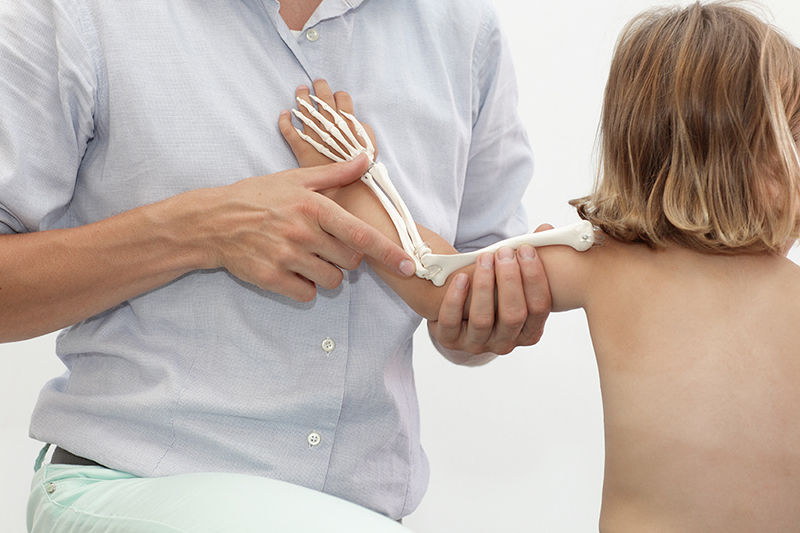
Metabolic & Genetic Bone Disorders
METABOLIC BONE DISEASES
RICKETS

Rickets is a metabolic bone disease affecting children, caused by deficiencies in vitamin D, calcium, or phosphate, leading to soft and weakened bones. Parents often search for rickets symptoms in children, signs of rickets in toddlers, and rickets treatment options to understand their child’s condition. Orthopedic problems associated with rickets include bow legs and rickets, knock knees, bone deformities, and widened wrists. Children with rickets may also have bone pain, growth problems, delayed walking, and in some cases fractures. Orthopedic specialists play a crucial role in diagnosis and management, which may involve bracing for rickets children or, in severe cases, rickets surgery for bone deformities. Early detection, along with physical therapy for rickets and proper medical treatment, helps restore normal bone growth and prevents long-term complications. Parents also often look for advice on how to treat rickets at home and when to see doctor for rickets to ensure timely care and prevention.
RENAL OSTEODYSTROPHY AND ITS SEQUELAE

Renal osteodystrophy is a bone disorder that occurs in children with chronic kidney disease (CKD), affecting normal bone growth and strength. Parents often search for renal osteodystrophy symptoms in children, kidney bone disease in kids, and renal osteodystrophy treatment options to understand these complex issues. Orthopedic problems associated with renal osteodystrophy include bone pain in children with kidney disease, growth delays, skeletal deformities such as bowed legs or spine curvature (scoliosis), and an increased risk of fractures due to bone density loss. These arise because impaired kidneys cannot maintain the proper balance of calcium, phosphate, and vitamin D, which are vital for healthy bone development. Orthopedic care involves regular monitoring of bone alignment, supporting mobility through physical therapy for bone disease in kidney failure, and correcting deformities when necessary with bracing or bone deformity surgery. Parents also search for when to see orthopedic doctor kidney bone disease to ensure timely care. Early intervention and close collaboration with kidney specialists help protect the child’s bone health, growth, and overall well-being.
FRAGILITY DISORDERS
OSTEOGENESIS IMPERFECTA

Osteogenesis Imperfecta (OI), also known as brittle bone disease, is a genetic condition that affects bone strength and structure. Parents often search for osteogenesis imperfecta symptoms in children, child with fragile bones, and bone fractures in osteogenesis imperfecta to understand how to care for their child. Orthopaedic care for OI focuses on preventing fractures, managing bone deformities, and addressing issues like scoliosis (curved spine) and joint laxity. Treatment may include fracture care, use of braces for brittle bones, physical therapy for osteogenesis imperfecta, and in some cases, surgery for osteogenesis imperfecta children such as rodding—inserting metal rods into long bones to strengthen and stabilize them. Parents also seek information on how to prevent fractures in OI, mobility aids like wheelchairs, and managing growth problems related to the condition. With the right orthopaedic support and a multidisciplinary approach, many children with OI can lead active, fulfilling lives.
SKELETAL DYSPLASIAS
SKELETAL DYSPLASIAS - Achondroplasia / Hypochondroplasia / Other rare dysplasias

Achondroplasia, the most common form of skeletal dysplasia, is a genetic condition that affects bone and cartilage growth, often leading to short stature, limb deformities, and joint problems. Parents frequently search for terms like achondroplasia symptoms in children, bowed legs in achondroplasia, and spinal problems in achondroplasia to better understand their child’s needs. From an orthopaedic perspective, children may develop genu varum (bow legs), kyphosis or lordosis (spinal curvature), and mobility issues in achondroplasia, including walking problems due to limb alignment and muscle imbalance. Orthopedic care for achondroplasia includes growth monitoring, bracing for bow legs, physical therapy for achondroplasia, and in some cases, leg alignment surgery or even limb lengthening surgery. Parents often ask when to see an orthopedic doctor for achondroplasia, especially if there are concerns about function or comfort. A multidisciplinary care approach for achondroplasia—involving orthopedic surgeons, physiotherapists, and genetic specialists—is crucial to support the child’s mobility, independence, and overall quality of life.